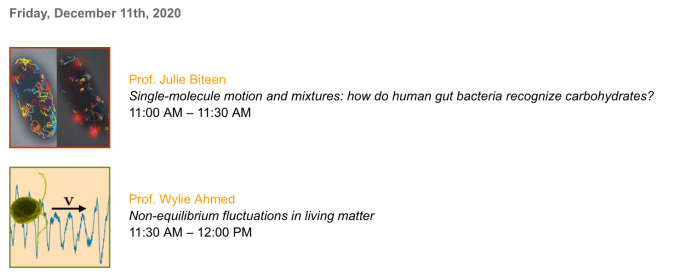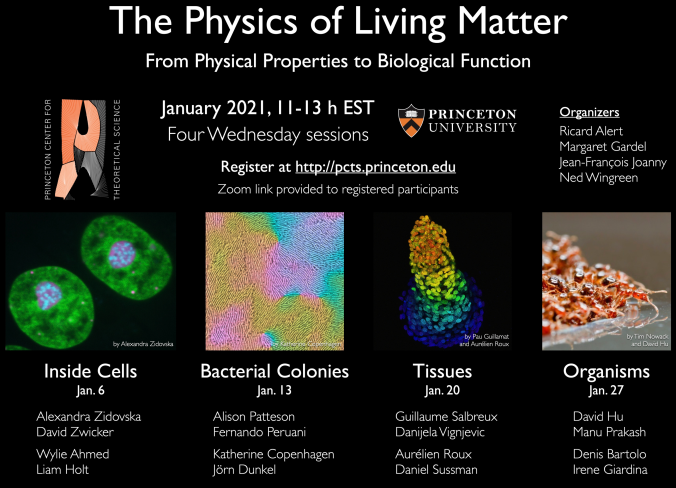Dr. Ryan McGorty at University of San Diego, and myself, were awarded a grant to do collaborative soft matter research with students in Mexico! NSF 2245406 and NSF 2245405. #NSFFunded
More info below:
We encounter soft materials frequently in our everyday lives from ointments and lotions to paints and inks. Understanding these soft materials, which often possess both fluid-like and solid-like properties, and how they flow or deform is necessary for advancing many technologies, including 3D printing where the properties of the ink or resin must be finely tuned. To make progress on our scientific understanding of soft materials, this IRES Track I project will strengthen collaborations between researchers in Southern California and in Mexico. Each year over the 3-year duration of this project, 6 students will be recruited to take part in this international research experience. U.S. students from historically underrepresented groups and from predominantly undergraduate colleges and community colleges will be targeted in the recruitment effort. Those students will conduct research over the summer at either the Center for Research in Advanced Materials (Centro de Investigación en Materiales Avanzados, CIMAV) in Monterrey, Mexico or the University of Guanajuato in León, Mexico. Working with research mentors in Mexico and the mentors in Southern California, students will take various approaches to study the physics and chemistry of soft materials. Such approaches include using computer simulations to study fundamental aspects of soft materials and using 3D printers to apply our scientific understanding of soft materials to the design and use of new inks and resins. Students taking part in this research and receiving mentorship from U.S. and Mexican scientists will be prepared to cooperate with diverse teams across borders and to become leaders of a globally engaged scientific workforce.
This IRES project will strengthen collaborations between researchers in the U.S. and Mexico by supporting the participation of 6 undergraduates per year in mentored summer research experiences. The PIs at the University of San Diego and California State University Fullerton will recruit undergraduate students from historically underrepresented groups and from predominantly undergraduate institutions and community colleges. After receiving training on basic research skills, selected students will spend approximately 8 weeks at either the Center for Research in Advanced Materials (Centro de Investigación en Materiales Avanzados, CIMAV) in Monterrey, Mexico or the University of Guanajuato in León, Mexico. Research projects undertaken by students will advance our understanding of soft matter, particularly in the areas of colloid science and rheology. Projects will include investigating the rheology of nanocellulose and cellulose composites for use in 3D printing applications, quantifying the translational and rotational diffusion of anisotropic colloids to better understand transport and microrheology in complex environments, and developing computer simulations of colloidal particles in external fields. These projects will lead to new analysis techniques in microrheology and optical microscopy and will advance the development of inks for 3D printing. The specific objectives of this project are to (1) train and mentor 18 (6 students per year for 3 years) undergraduate students on soft matter research in a collaborative and international environment, (2) develop and foster research collaborations among institutions in the U.S. and Mexico, (3) characterize and harness the rheological properties of complex fluids and gels for enhancing our fundamental knowledge of soft matter and for applying such materials to 3D printing applications, (4) disseminate research outcomes at scientific conferences and in peer-reviewed journals, and (5) develop a cohort of scientists from predominantly underrepresented groups who can network and collaborate effectively with others from various backgrounds and who can draw upon a diverse set of mentors. IRES participants will advance scientific knowledge in projects that range from applied to fundamental using experimental and computational approaches. Students will learn how these diverse approaches used by an international team can address pressing scientific and engineering problems.
This award reflects NSF’s statutory mission and has been deemed worthy of support through evaluation using the Foundation’s intellectual merit and broader impacts review criteria.

